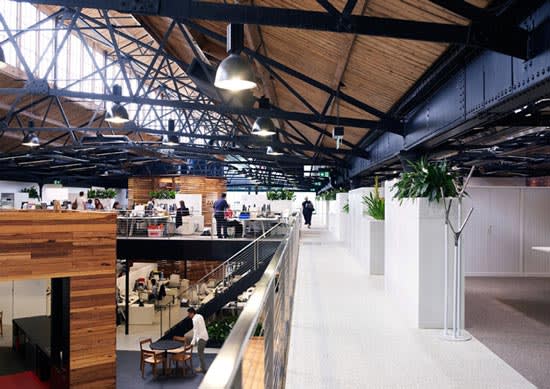Building Retrofitting on the rise in Melbourne
In June this year, Urban.com.au examined the ins and outs of the City of Melbourne sustainability initiative called 1200 Buildings which provides incentives to owners of aging office buildings throughout the City of Melbourne municipality to retrofit their structures and make them more sustainable and environmentally friendly.
In a follow up to Urban.com.au's article, a recent retrofit survey explored how Melbourne's old office buildings have been upgraded to more sustainable systems and fit outs with some surprising results. Environment Portfolio Chair, Councillor Arron Wood, said results revealed that since 2008, 25 per cent of the 589 buildings surveyed have either taken advantage of the Council incentives and have undergone a retrofit or are currently undergoing a retrofit. “The survey results have confirmed what we already suspected – that a lot more retrofitting is going on in our city than we knew about. Taking this temperature check gives us a better understanding of building managers’ motivations and helps us adapt our own programs to better address their needs,” Cr Wood said.
Further information gathered from the survey revealed that 16 per cent of building owners and representatives are planning to undertake a retrofit within the next five years. This is a jump of six per cent from two years ago, when only 10 per cent were thinking of doing a retrofit. In total between 2008 and 2018, 32 per cent of buildings will be or have recently done work which improves environmental outcomes.
“In recent months the City of Melbourne has received a number of awards for its work in sustainability including a C40 award in London and awards for our Smart Blocks and 1200 Buildings programs. Just last week 1200 Buildings received further recognition at the Energy Efficiency Council Industry Awards, as joint winners of the ‘Best Energy Savings Program.’ “It takes the efforts of an entire city to be recognised on this level. We know that achieving some of our goals including becoming carbon neutral by 2020 cannot be done alone. We applaud the buildings that have already embraced these changes and we will continue to work with other building managers through programs like 1200 Buildings to encourage more of this activity.” Cr Wood said.
The report reveals that lighting upgrades were the most common retrofit activity, followed by installing or upgrading building management systems, metering and upgrading chillers and boilers. Key motivations included replacing broken assets, minimising energy consumption, attracting or retaining tenants and extending the life of assets. Of these key motivators, the one that will not necessarily make the largest impact initially but most definitely the medium to long term would have to be minimising energy consumption. This certainly comes to the forefront particularly when you consider the upward energy and financial pressures of operating and maintaining old structures that the 1200 Buildings initiative gains resonance. However, in this day and age of short term commercial leasing arrangements (as it appears to be in some cases), attracting and retaining tenants through improving competitiveness and by meeting sustainability expectations is most likely to be the main driver for owners to increasingly take on retrofit initiatives.
The results of the survey may also show, in some capacity at least, that people tend to follow movements or initiatives when others have proven to receive benefit from it. In a sustainable urban development point of view, programs such as 1200 Buildings that bring older buildings into line with government and commercial environmental expectations are fantastic and let's hope that the momentum generated flows onto other Councils.
